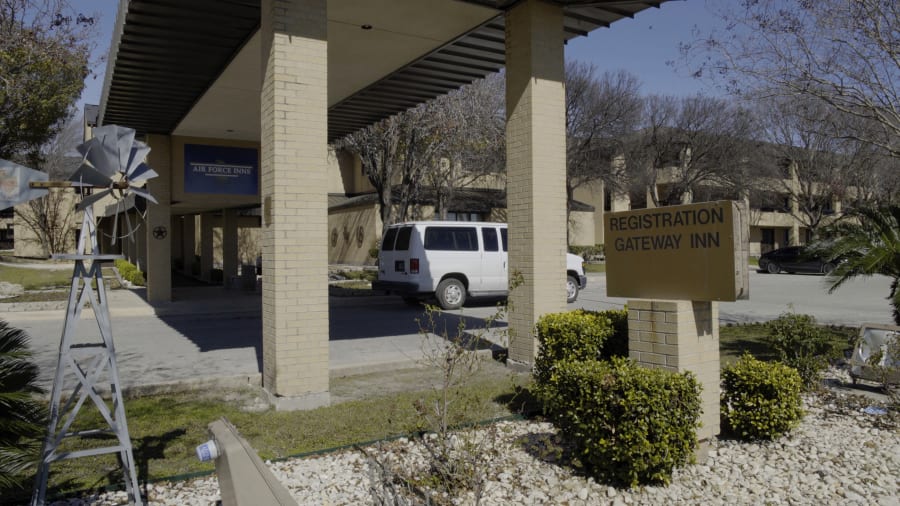SAN ANTONIO – Editor’s note: This story is a look back at some of the biggest developments of the COVID-19 pandemic in 2020. See a full timeline here.
The beginnings of the COVID-19 crisis hit home one year ago.
Before the shutdowns, before face mask mandates and even before it was called a pandemic, San Antonio officials and locals braced for the arrival of evacuees from China’s Hubei Province, where the respiratory illness was first detected.
The American passengers, who were evacuated for the fear of possibly having contracted the virus in Wuhan, China, arrived via plane at 12:25 p.m. Feb. 7, 2020, and touched down at Joint Base San Antonio-Lackland.
At that time, it was unclear how — or if — the new, mystery illness would affect everyday life, as only 12 cases of the novel coronavirus in the U.S. had been confirmed the day before their arrival.
Would the virus, if detected, remain within the confines of the JBSA gates? Could it spread to the community as it did overseas?
Those were some of the questions San Antonio officials and residents asked during that time — likely not knowing that the virus would result in at least 178,600 cases and 2,186 deaths in Bexar County a year later.
After the plane arrived, the CDC reassured the city that a 14-day quarantine would be in place to protect the safety and health of the passengers and San Antonio residents.
In a news conference later that day, Jennifer McQuiston, the deputy director of the CDC’s Division of High Consequence Pathogens and Pathology, said the evacuees would stay separated on the base, fenced off and watched over by U.S. Marshals agents.
“I’m happy to report that we did not find any evidence of illness among the passengers who landed here today,” McQuiston said at the time, adding that less than 100 passengers were quarantined on base.
Other passengers who stayed on the plane went on to Omaha, Nebraska.
The CDC said the passengers at Lackland would be screened and monitored every step of the way, including before takeoff and during the flight from the epicenter of the deadly disease.
They were issued quarantine orders at their arrival and given their designated quarantine location. The quarantine, a legal order, was intended to protect the travelers, their families and the community, CDC officials said.

One of the evacuees later became the first official COVID-19 patient in San Antonio and Texas.
The CDC, Texas Department of State Health Services and San Antonio Metro Health Department confirmed the case on Feb. 13, 2020, but reiterated that the threat to the public remained low.
“The collaboration between our local, state and federal partners is working as it was designed. We will continue to work together to protect our community from exposure to the virus,” Mayor Ron Nirenberg said in a news release that day.
Methodist Healthcare said the patient had tested positive for the virus on Feb. 12, 2020, after they came down with a fever. The patient was treated at Methodist Hospital | Texsan, in Balcones Heights.
The first San Antonio infection increased the nation’s COVID-19 case count to 15, but no deaths were reported at the time.
Lackland later saw the arrival of passengers from the Diamond Princess and Grand Princess cruise ships, which were docked off the coast of Japan and the Port of Oakland, respectively.
Of the 387 evacuees who quarantined at the base, 15 tested positive for COVID-19. All were eventually medically cleared and on March 25, the last of the evacuees left San Antonio.
By that week, the virus had achieved community transmission in San Antonio, but Bexar County Health officials don’t believe any of the cases in the community resulted from the evacuees’ stay here, despite the temporary premature release of one evacuee who had tested positive for the virus.





